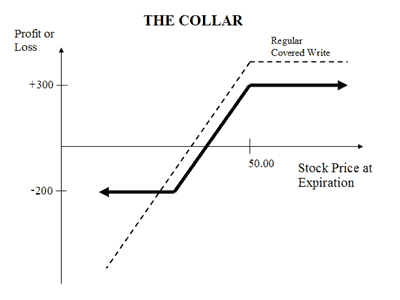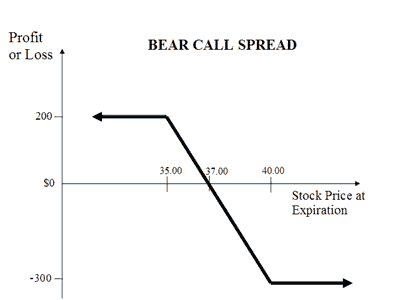 Zerodha (Trading & Demat Account)
Zerodha (Trading & Demat Account)
FREE Equity Delivery and MF
Flat ₹20/trade Intra-day/F&O
 Zerodha (Trading & Demat Account)
Zerodha (Trading & Demat Account)
FREE Equity Delivery and MF
Flat ₹20/trade Intra-day/F&O

|
|
Compare Collar and Bear Call Spread options trading strategies. Find similarities and differences between Collar and Bear Call Spread strategies. Find the best options trading strategy for your trading needs.
| Collar | Bear Call Spread | |
|---|---|---|
 |
 |
|
| About Strategy | A Collar is similar to Covered Call but involves another position of buying a Put Option to cover the fall in the price of the underlying. It involves buying an ATM Put Option & selling an OTM Call Option of the underlying asset. It is a low risk strategy since the Put Option minimizes the downside risk. However, the rewards are also limited and is perfect for conservatively Bullish market view. Suppose you are holding shares of SBI currently trading at Rs 250. You can deploy a collar strategy by selling a Call Option of strike price Rs 300 while at the same time purchasing a Rs 200 strike price Put option. If the price rises to Rs 300, your benefit from increase in value of your holdings and you will lose net premiums. If the price falls... Read More | A Bear Call Spread strategy involves buying a Call Option while simultaneously selling a Call Option of lower strike price on same underlying asset and expiry date. You receive a premium for selling a Call Option and pay a premium for buying a Call Option. So your cost of investment is much lower. The strategy is less risky with the reward limited to the difference in premium received and paid. This strategy is used when the trader believes that the price of underlying asset will go down moderately. This strategy is also known as the bear call credit spread as a net credit is received upon entering the trade. The risk and reward both are limited in the strategy. How to use the bear call spread options strategy? The bear call spr... Read More |
| Market View | Bullish | Bearish |
| Strategy Level | Advance | Beginners |
| Options Type | Call + Put + Underlying | Call |
| Number of Positions | 3 | 2 |
| Risk Profile | Limited | Limited |
| Reward Profile | Limited | Limited |
| Breakeven Point | Price of Features - Call Premium + Put Premium | Strike Price of Short Call + Net Premium Received |
| Collar | Bear Call Spread | |
|---|---|---|
| When to use? | The Collar strategy is perfect if you're Bullish for the underlying you're holding but are concerned with risk and want to protect your losses. |
The bear call spread options strategy is used when you are bearish in market view. The strategy minimizes your risk in the event of prime movements going against your expectations. |
| Market View | Bullish When you are of the view that the price of the underlying will move up but also want to protect the downside. |
Bearish When you are expecting the price of the underlying to moderately go down. |
| Action |
|
Let's assume you're Bearish on Nifty and are expecting mild drop in the price. You can deploy Bear Call strategy by selling a Call Option with lower strike and buying a Call Option with higher strike. You will receive a higher premium for selling a Call while pay lower premium for buying a Call. The net premium will be your profit. If the price of Nifty rises, your loss will be limited to difference between two strike prices minus net premium. |
| Breakeven Point | Price of Features - Call Premium + Put Premium |
Strike Price of Short Call + Net Premium Received The break even point is achieved when the price of the underlying is equal to strike price of the short Call plus net premium received. |
| Collar | Bear Call Spread | |
|---|---|---|
| Risks | Limited You will incur maximum losses when price of the underlying is less than the strike price of the Put Option. Max Loss = Purchase Price of Underlying - Strike Price of Long Put - Net Premium Received |
Limited The maximum loss occurs when the price of the underlying moves above the strike price of long Call. Maximum Loss = Long Call Strike Price - Short Call Strike Price - Net Premium Received |
| Rewards | Limited You will incur maximum profit when price of underlying is greater than the strike price of call option. Max Profit = Strike Price of Short Call - Purchase Price of Underlying + Net Premium Received |
Limited The maximum profit the net premium received. It occurs when the price of the underlying is greater than strike price of short Call Option. Max Profit = Net Premium Received - Commissions Paid |
| Maximum Profit Scenario | Underlying goes up and Call option exercised |
Underlying goes down and both options not exercised |
| Maximum Loss Scenario | Underlying goes down and Put option exercised |
Underlying goes up and both options exercised |
| Collar | Bear Call Spread | |
|---|---|---|
| Advantages | It protects the losses on underlying asset. |
It allows you to profit in a flat market scenario when you're expecting the underlying to mildly drop, be range bound or marginally rise. |
| Disadvantage | The profit is limited |
Limited profit potential. |
| Simillar Strategies | Covered Put Bull, Call Spread, Bull Put Spread | Bear Put Spread, Bull Call Spread |

Add a public comment...

FREE Intraday Trading (Eq, F&O)
Flat ₹20 Per Trade in F&O
|
|